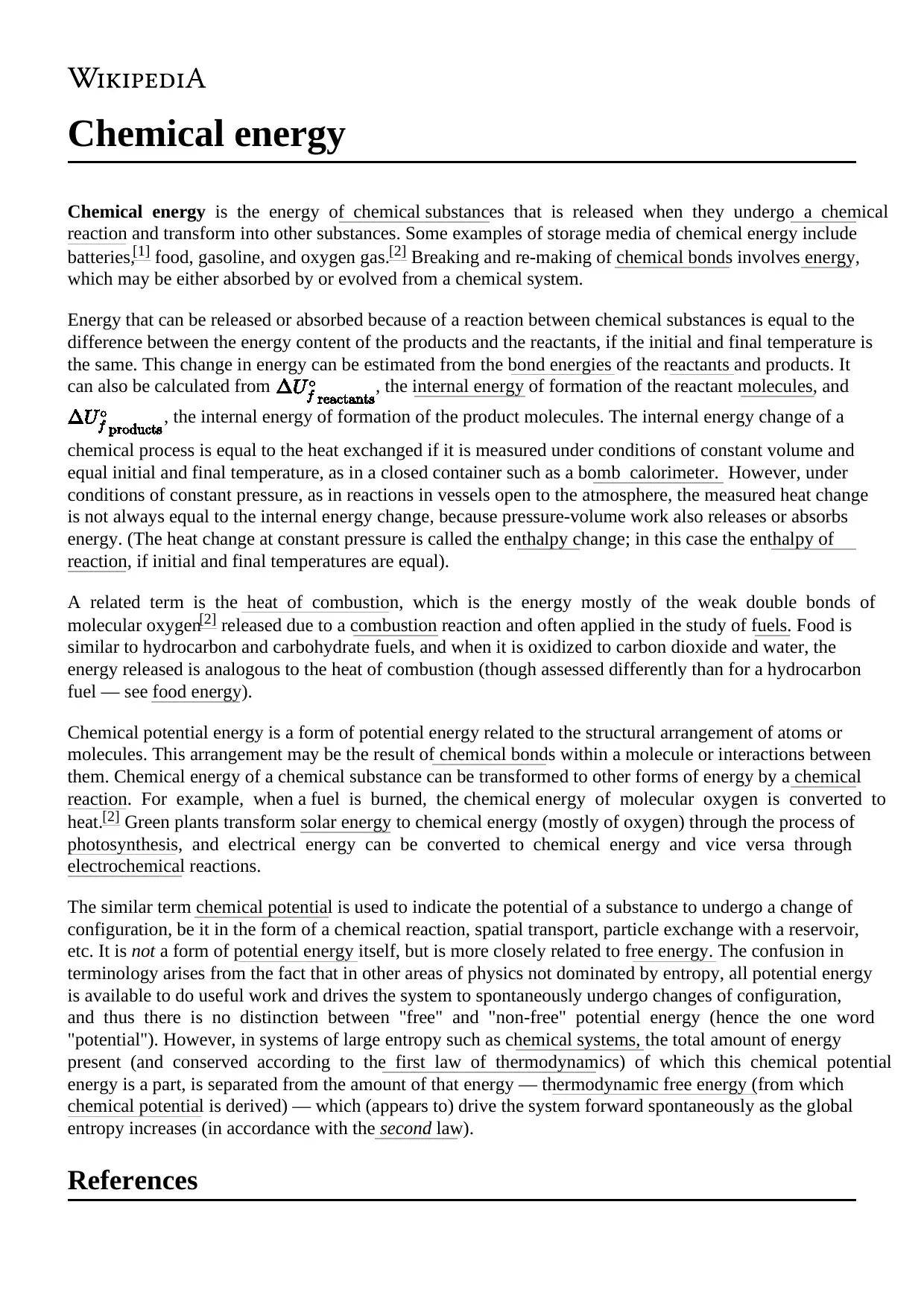Comprehensive Analysis of Chemical Energy: Concepts and Applications
VerifiedAdded on 2021/11/16
|2
|823
|64
Homework Assignment
AI Summary
This document provides a detailed explanation of chemical energy, which is the energy released or absorbed during chemical reactions. It covers various aspects, including the storage of chemical energy in substances like batteries, food, and fuels. The document explains how energy changes are related to the breaking and making of chemical bonds, and the concepts of enthalpy and heat of combustion are discussed. It also explores the concept of chemical potential energy and how it relates to the structural arrangement of atoms and molecules. The transformation of chemical energy into other forms, such as heat and electrical energy, is also examined, along with the process of photosynthesis. The document references key scientific papers and the Wikipedia article on chemical energy to support the information provided.
1 out of 2








![[object Object]](/_next/static/media/star-bottom.7253800d.svg)